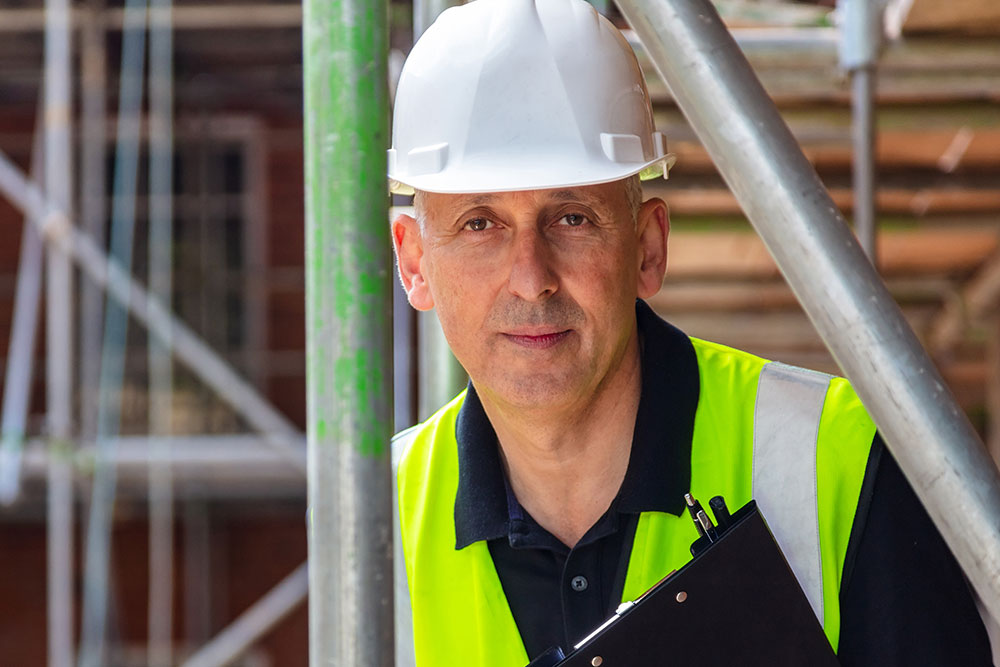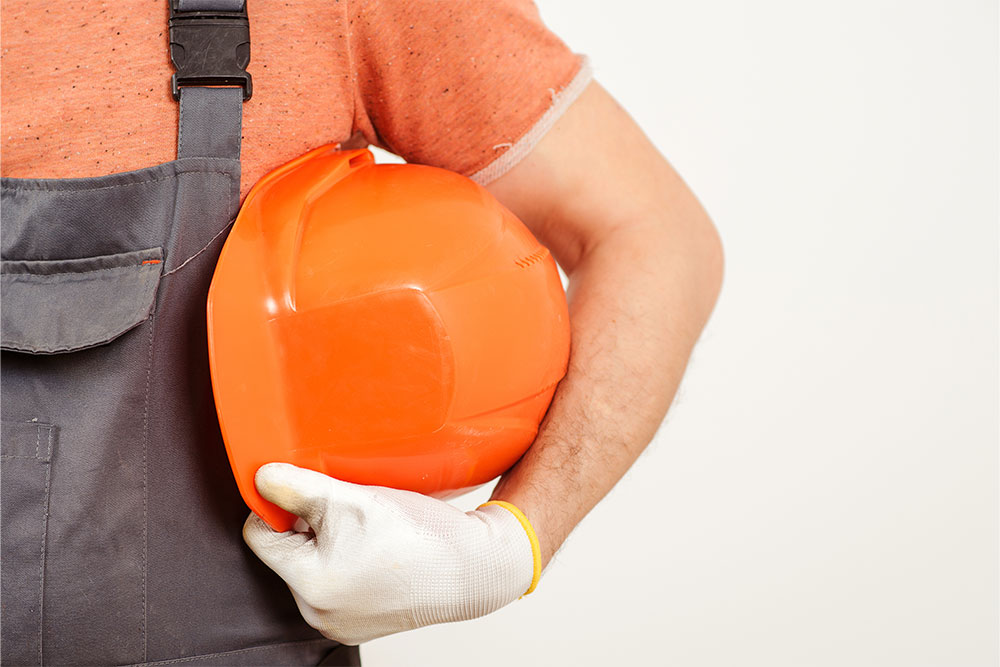
The majority of workplace fatalities happened in the construction industry last year.
Falls from height were the most dangerous accident, killing 40 people. Being struck by a moving object came in second, with 29 fatal incidents.
If either of these things ever happened to you, you’d want to be wearing a hard hat.
Or, if you were the first person on the scene, you’d need to know where to get help. And on a construction site with hundreds of workers, how will you spot the first aiders?
Look for the hard hat colour codes.
And it’s not just for emergencies. Hard hat colour codes help you quickly recognise your colleagues’ different skills and qualifications to know who does what.
The system has been simplified in the last few years, but if you’re still unsure what each colour means or are new to the industry, read our guide.
Why Did Colour Codes Change?
The idea of using hard hat colour codes to signal different qualifications or experience levels has existed in the industry for a while. It’s one of many safety initiatives championed by industry representatives to protect workers.
The previous colour codes system wasn’t the easiest to use, however. It was built around seven colours. In the best conditions, it’s tricky to remember how seven different colours correspond with seven different disciplines. Imagine trying to do that in a high-pressure situation.
So Build UK, the largest representative organisation for the UK construction industry, overhauled the system and introduced a simplified version. The new colour safety rules are now built around four colours, which is much easier to track on a working site.
Do You Have to Use the Colour Code System?
The colour code system isn’t mandatory across UK construction sites, but it is widely adopted. The only exception is for Network Rail projects.
So, while you technically don’t have to, following Build UK’s guidelines is considered best practice in the industry.
What do the New Hard Hat Colours Mean?
The new system, which came into force in 2017, uses four hard hat colours.
Learn each of them, and you’ll be able to quickly determine the qualifications and experience levels of those around you on-site. So, in an emergency, you’ll know who to approach for help.
And it doesn’t just enable you to react to emergencies. The system can also help prevent incidents.
Colour codes help you spot when someone’s in the wrong place or doing something they’re not qualified for, giving you a chance to intervene before the worst happens.
Black
Let’s start at the top – black hats are for supervisors and foremen.

If you need general assistance, look out for anyone wearing a black hard hat – they should be the most qualified and experienced people on site.
White
White hard hats signal a few different roles, but all have one thing in common: seniority.
Anyone wearing a white hard hat should be one of the following:
- Site Manager
- Competent operative
- Vehicle marshal

You must look at how they dress to quickly tell the difference between white hat wearers.
Vehicle marshals must wear a distinct class 3 hi-vis jacket to differentiate themselves.
And while it’s not a requirement, site managers are likely to be dressed more formally than other workers.
Orange
Orange signals a slinger/signaller – a skilled position that requires expertise and training.

The people wearing orange hard hats might also have other skills – they might be a bricklayer, joiner or other skilled tradesperson. The orange colour of their hard hat tells you they also have the qualifications and expertise to act as a slinger or signaller on top of their other roles.
Blue
Blue hard hats act as a catch-all for everyone else. But similar to the white hard hats, they signal one common thing: a lack of experience on-site.
This means that blue hard hats should be given to any:
- Apprentices
- Visitors
- Architects
- Untrained workers
- Anyone else

Suppose you see a blue hat wearer unsupervised. In that case, you should check in with them and ensure they know where to go or have a more experienced colleague supervising them. Doing so might help prevent an accident.
Other Colours
Build UK’s guidelines cover four official colours, but there are two more you should be aware of: green and red.
The reasoning behind these colours makes them easy to remember:
- Green hard hat wearers are trained first aiders
- Red hard hat wearers are fire marshals

Some stickers signal these positions, which can be added to other hard hats if the individual has more than one responsibility or area of expertise.
What Happens If You Don’t Follow the Colour Safety Rules?
UK legislation does not specifically require the use of coloured helmets. The Health and Safety at Work Act 1974 sets out general responsibilities for employers to safeguard employees, but it does not include rules about helmet colours.
Instead, guidance around helmet colour coding comes from industry standards and best practices. So, while employers are not legally required to implement colour coding, doing so is widely recognised as a sensible and effective safety measure.
When Colour Coding Becomes a Safety Issue
Although helmet colour coding is not a legal obligation, ignoring it can still present problems. Without a clear way to identify roles such as supervisors, fire marshals or first aiders, response times during emergencies may be delayed.
In the event of an accident, the lack of a recognised colour system could be viewed as a contributing factor in a wider failure to manage site safety effectively. In these circumstances, the HSE may intervene, not because of the absence of colour coding itself, but due to more serious underlying safety shortcomings.
Enforcement and Accountability
The HSE has the power to issue improvement notices, enforce site closures, or recommend prosecution when serious breaches of health and safety law are identified. Typically, these actions address significant failures in safety management rather than the specific use of helmet colours.
That said, in the case of a civil claim following an accident, the courts will examine whether the employer took reasonable precautions to prevent harm. Following industry-recognised practices, including helmet colour coding, may support the employer’s defence as part of their overall duty of care.
Why Colour Coding Still Matters
Using a helmet colour system provides a fast and reliable way to distinguish roles on site, helping to prevent confusion and promote safer operations. While it is not required by law, it remains an effective tool that supports good safety practices.
Employers are encouraged to view helmet colour coding as one element of a broader health and safety strategy. On its own, it is not a substitute for training, supervision or PPE, but it complements these measures and contributes to a more organised and safer work environment.
General Hard Hat Guidance
Colour safety rules aren’t the only thing you must consider regarding hard hats.
General HSE guidance says that you must make sure any hard hats are:
- In good condition
- Worn by everyone on site (with one exception for religious beliefs)
- Fitted properly
- From a reputable supplier
You should note that hard hats naturally deteriorate over time. Manufacturers recommend an average lifespan of five years for most hard hats, so check the date yours was made (it should be stamped somewhere on the hat). Some hard hats also come with specially designed stickers that start to fade when it’s time to replace the hat.
Other Site Safety Fundamentals
Hard hats are mandatory safety measures, expected to be worn on every construction site in the UK. But, just like hard hats, site safety isn’t one-size-fits-all. Start with a good site risk assessment to ensure you do everything possible to keep your colleagues safe and your projects running smoothly.
And if you’re responsible for the risk assessment, you must be competent and know what you’re doing. Otherwise, hazards can be missed and you might be liable if anything goes wrong.
Our online Construction Safety courses will help you get up to speed with risk assessments and help you identify and control hazards on your site. You’ll learn the principles of risk assessment, including the terms, use of risk matrixes and how to properly apply the hierarchy of controls – all tailored to the construction industry.


















































































































































































































































































































































































































































































































































































































































































































































